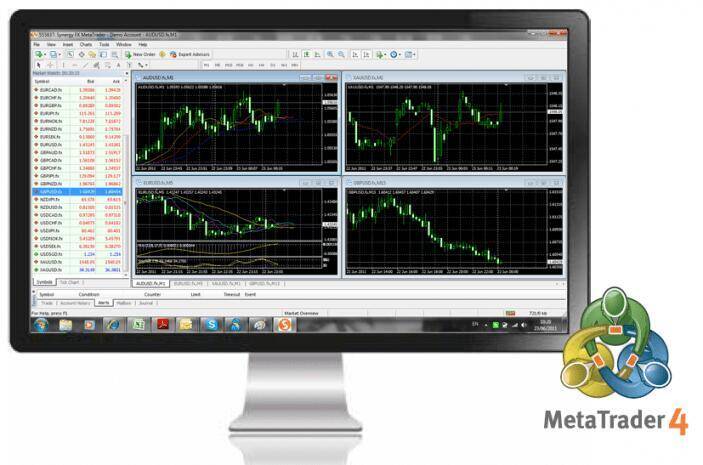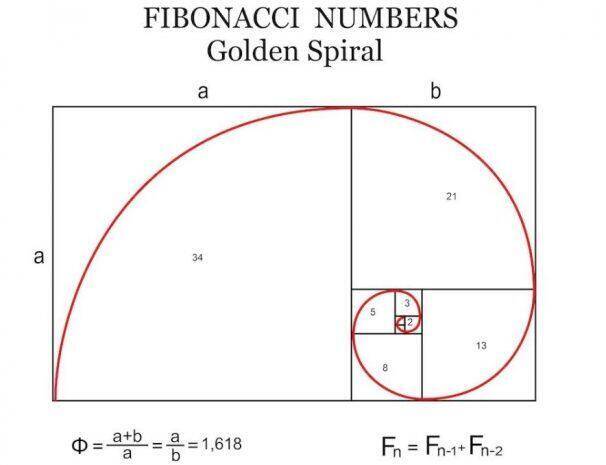Contents:


Information is data that is understandable, relevant, systemised, accurate and timely. Data versus Information comparison chart DataInformationMeaning Data is raw, unorganized facts that need to be processed. Data can be something simple and seemingly random and useless until it is organized. When data is processed, organized, structured or presented in a given context so as to make it useful, it is called information. The average score of a class or of the entire school is information that can be derived from the given data.
As you will see, in this and other examples, powerful insights are rarely obtained by looking at just one dimension of data. Context and correlation are important in order to reveal insights. Data analytics platforms and technologies that have the capability of synthesizing data of different types are important in order to get the best insights. The statistics and the tables of collections of figures are the sources of data. For instance, you might be collecting data about how long people are spending on a specific page of your website before bouncing. You could gain a more robust understanding of why that may be through interpretation and organization.
Data vs. Information in Business and Healthcare
That can include using automated data reporting that’s transparent to key people in your business and offers meaningful insights. Remember that if the information isn’t timely and relevant, it isn’t worthwhile for your business to collect. Data is raw statistics and facts collected for either analysis or reference. Because data lacks context, a piece of data isn’t impactful.
- Every business generates data, practically at every moment, but in its raw form, it isn’t particularly useful.
- Data can consist of a number, a symbol, a character, a phrase, codes, graphs, and so forth.
- It is a set of characters, symbols, and numbers by which we tell the computer what to do.
- Data has various forms like letters, numbers, images, or characters.
- Data typically comes in the form of graphs, numbers, figures, or statistics.
Without any additional difference between information and data, those temperatures have no meaning. However, when you analyze and organize that information, you could determine seasonal temperature patterns or even broader climate trends. Only when the data is organized and compiled in a useful way can it provide information that is beneficial to others.
What Is Master Data Management (MDM) And Why It Matters
The article will be depicting a comparative chart and tabulated points to explain the basis of differentiation in context to data vs information as well. Businesses of all sizes should think carefully about how to store data — for example, electronically, paper-based files or video tapes. The ability to retrieve data later and transform it into information will be either helped or hindered by how the data is stored and protected.
The impact of information revolution has been extended to each individual in the society and it is much faster than industrial revolution. Data themselves are fairly useless, but when these data are interpreted and processed to determine its true meaning, they becomes useful and can be named as Information. Organizations must guarantee that only high-quality and relevant data is captured and retained for subsequent processing at this level. 2- Information can’t exist without data but data doesn’t rely on the information.
Working with Microsoft, Zegna adds AI to digital toolkit to engage … – Microsoft
Working with Microsoft, Zegna adds AI to digital toolkit to engage ….
Posted: Thu, 20 Apr 2023 07:57:15 GMT [source]
Modem rules, regulation and law requires every transaction to happen in a written form, may be an agreement, application, voucher, bill, letter, memo, order etc. Paper files require a high amount of storage space and paper storage creates several other problems like fire risk, spoilage and deterioration by way of aging microorganism and humidity etc. In modem days information is needed to run man’s own livelihood to run a system or process or to command a business. In conclusion, the difference between data and information is vital in today’s world where the amount of data being generated is growing exponentially. The data collected from your system may be entered into the excel sheet as needed and then modified to the necessary information utilizing its cutting-edge technologies. 5- Data is meaningless, whereas information exists to bring insights and meaning.
What are Key differences between Data and Information?
It is derived from the https://traderoom.info/ Datum that means “something given”. Generally, data can be collected in different forms such as letters, a set of characters, numbers, images, graphics, etc. It can be numbers, words, measurements, observations, or even just descriptions of things. Data is the building block for information, but it doesn’t provide any context or meaning on its own. Data and facts can be analysed or used as an effort to gain knowledge and infer on a conclusion.
Interstitial lung disease diagnosis and prognosis using an AI system … – Nature.com
Interstitial lung disease diagnosis and prognosis using an AI system ….
Posted: Thu, 20 Apr 2023 13:42:15 GMT [source]
You cannot just make a decision totally based on data, but you might make one hinged on the information. The very first step in making a decision, especially in a scenario is to accurately understand and comprehend the circumstances and factors. It’s only feasible if you have got the requisite information. Also, information is vital in the decision-making process. A person’s behaviors are determined by the knowledge that they have. Nonetheless, because data is meaningless and raw, it is of no value in decision-making.
What is the difference between data and information?
Data can be structured, tabular data, graph, data tree whereas Information is language, ideas, and thoughts based on the given data. Data does not have any specific purpose whereas Information carries a meaning that has been assigned by interpreting data. Data and information are both critical elements in business decision-making. By understanding how these components work together, you can move your business toward a more data- and insights-driven culture. Why does the distinction between data vs information matter for businesses? Organizations that prioritize collecting data, interpreting it, and putting that information to use can realize significant benefits.
For example, your investment in a mutual fund may be up by 5% and you may conclude that the fund managers are doing a great job. However, this could be misleading if the major stock market indices are up by 12%. In this case, the fund has underperformed the market significantly. For example, a list of dates — data — is meaningless without the information that makes the dates relevant . Data typically comes in the form of graphs, numbers, figures, or statistics. Information is typically presented through words, language, thoughts, and ideas.
It is refined and cleaned through purposeful intelligence to become information. Therefore data is manipulated through tabulation, analysis and similar other operations which enhance the explanation and interpretation. Data has various forms like letters, numbers, images, or characters. Computer data for instance is represented in the form of 0’s and 1’s – that can be interpreted to form a fact or value. The measuring units of data are Nibble, Bits, kilobytes, Megabytes, Gigabytes, Bytes, Terabytes, Petabyte et al. They are raw which requires rendering to acquire meaningful information.

Information is easy to understand and provides a context for data. More importantly, information is always dependent on data. Information is processed data that includes data with context, relevance, and purpose, which helps to ensure undetectability and reduce uncertainty. It generally provides context for the data and simplifies decision-making as well as improves the reliability of the data. Data is a raw, unanalyzed, unorganized and unrelated entity that doesn’t have any contextual meaning.
Since information always contains meaningful facts, it is easy to comprehend. Examples of information are report card of a student, a sells report, etc. Describe the difference between research and quality improvement.
Data is a collection of individual statistics, facts, or items of information, while information is data that is processed, organized, and structured. According to this, we can conclude that data is an unorganized description of raw facts or values from which information can be extracted/ interpreted in an organized and meaningful manner. Data refers to the facts and details from which information is obtained. The data is not individually helpful unless extracted or interpreted. It’s just some meaningless characters, numbers, symbols, etc. Furthermore, information has some meaning and can be useful to humans in some important ways, such as decision making, forecasting, etc.
Qualitative Data emerges when the categories present in data are distinctly separated under an observation and expressed through natural language. Business Information like its other segments in the information industry has several forms i.e., News, Credit & Financial Information, Market Research, IT Research, and Industry Analysis. They can further be categorized into directories, periodicals, stats, government information, guides, handbooks, almanacs, and directories.

The data gathered by the researcher or observer may or may not be useful. Information, on the other hand, is always useful and valuable. Information is considered more reliable since it offers facts that may be utilized to make decisions. When we read these pages, examine the material, and process it in our minds, it becomes information. Let’s understand it with an example, see it is a fact that an apple a day can keep the doctor away. Information assigns meaning and improves the reliability of the data.
Generally, the data has no particular purpose and significance. The data is processed appropriately to make it meaningful otherwise it has little or no meaning to human beings. Data is a raw form of knowledge and, on its own, doesn’t carry any significance or purpose.
How can businesses harness the power of data and information?
The history of temperature readings all over the world for the past 100 years is data. If this data is organized and analyzed to find that global temperature is rising, then that is information. Companies that grasp what the digital workplace is really all about are willing to change the ways people and applications connect across their organizations. By fostering a digitally driven culture of collaboration, they break down silos, share knowledge more effectively and compete more successfully. Data does not depend on information; however, information depends on data.
Take a closer look at data vs information and how these concepts might be utilized in a business ecosystem. Explain the uses of quantitative data and qualitative data in the scientific process. The following box represents the information where the raw data has been organized, interpreted, and formatted in a predefined parameter approach. Human mind purposefully organized the information and evaluate it to produce knowledge. In other words the ability of the person recalls or uses his information and experience is known as knowledge. For example, “386” is data, “your marks are 386” is information, and “It is result of your hard work” is knowledge.
In essence, Information exists to systematize relevant and timely data to inform or to develop ideas. Unlike data, information is critical since it processes data through purposeful intelligence to interpret or predict or explain. Information is data collated to derive meaningful inferences according to its contextual requirement. Information is structured, processed, and presented with assigned meaning that improves the reliability of the data acquired. Information also ensures that there remains no uncertainty or undesirable. So, anything that is considered as input for a data processing system like a computer or other software, is data that is further processed and stored as information and meaning to the data.
This is so because there is a whole lot of processing needs to be done on data to make it useful or understand something out of it. Once data is analyzed nor the analysis of data is done, the data becomes information at the same moment. There is no meaning that can be derived from raw data and it cannot be utilized anywhere. The analysis gives a broad figure of the overall profit or loss of the organization.
